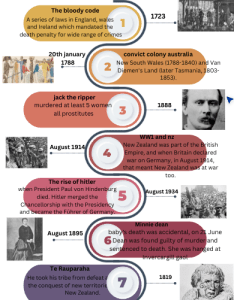Kate is recognised around the world for her actions as the leader to fight for women’s rights in New Zealand, being the first ever country for New Zealand women to vote. Her and other pioneering women campaigned so effectively that in 1893 to grant all women over 21 to have a say. (vote)
The early life
Catherine Wilson Malcolm was born in Liverpool, in England on March 10th 1847. Her early childhood years were spent in London, Nairn in Scotland, and Dublin. Her strong religious education and her adherence to religious principle and Christian socialism is attributed to the influence of an uncle, who was minister of the Free Church of Scotland in Nairn.
Later on in 1862, Kate’s father had passed away and in 1868 her mother brought Katherine and her two other brothers and a sister as saloon passengers to New Zealand. They arrived on the Matoaka at Lyttelton in February 1869. The family settled in Christchurch, where Katherine’s sister, Marie Beath, was living.
During the early years of her marriage with husband Walter Allen Sheppard. Their only son, Douglas, was born in Christchurch, October 1880. She was an active member of the Trinity Congregational Church, giving her time to church visiting, Bible classes and fund-raising.
Next Part
In 1885 Mary Leavitt, an evangelist from the Woman’s Christian Temperance Union of the United States of America, commenced her mission in New Zealand and Kate Sheppard became a founding member of the New Zealand Women’s Christian Temperance Union. It was soon realized by the union that producing social and legislative reforms concerning temperament and the mental health of women and children would be more effectively open if women had the right to vote and the right to representation in Parliament. In 1887 franchise departments were formed within the local unions and Sheppard was appointed national superintendent of the franchise and legislation department.
This responsively had Kate for coordinating and encouraging the local unions; she prepared pamphlets, writing letters to the press and stimulated a debate within the WCTU, church meetings, and temperance and political societies. Kate had been motivated by humanitarian principles and a strong sense of justice, ‘whether the race, class, sex or creed is inhuman and must be over’. It was a quiet, determined, persuasive feminine voice.
Kate was accompanied on her speaking engagements by her younger sister, Isabella May, who worked with her as superintendent of the literature department of the WCTU. The franchise department of the WCTU took the first of three major petitions to Parliament in 1891. The petition was presented by Sir John Hall, and strongly supported by Alfred Saunders and the premier, John Ballance It was signed by more than 9,000 women, and the second in 1892 by more than 19,000.
After the largest petition ever presented to Parliament in 1893 with almost 32,000 signatures, the Electoral Act 1893 was passed on 19 September and Kate Sheppard received a telegram from the premier, Richard Seddon previously her political enemy in the House, conceding victory to the women. The governor, Lord Glasgow, honored Kate Sheppard as a political leader, by symbolically presenting to her the pen with which the bill granting womanhood suffrage had been signed.
New Zealand had been the first ever country in which all women had the right to vote..



